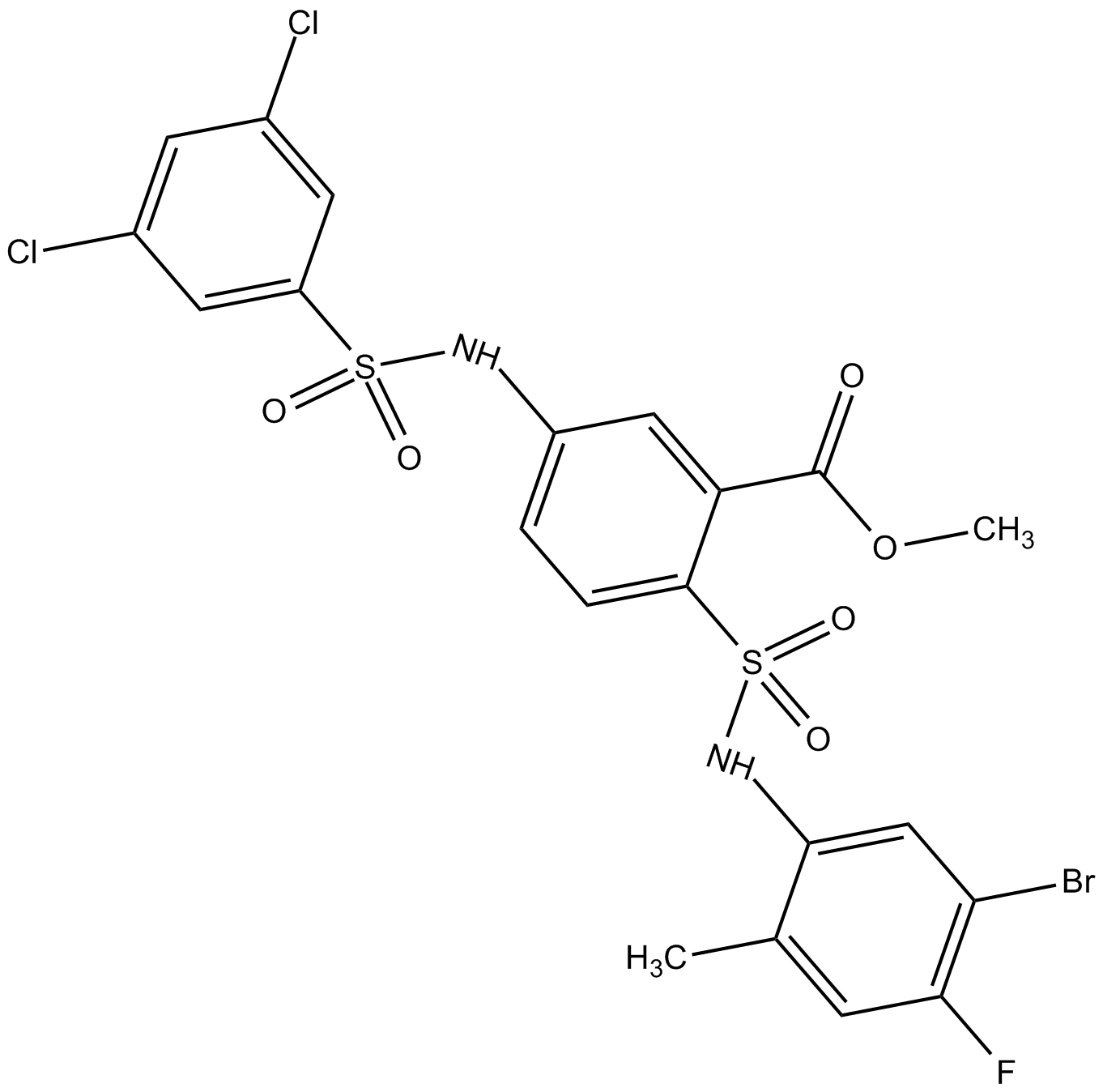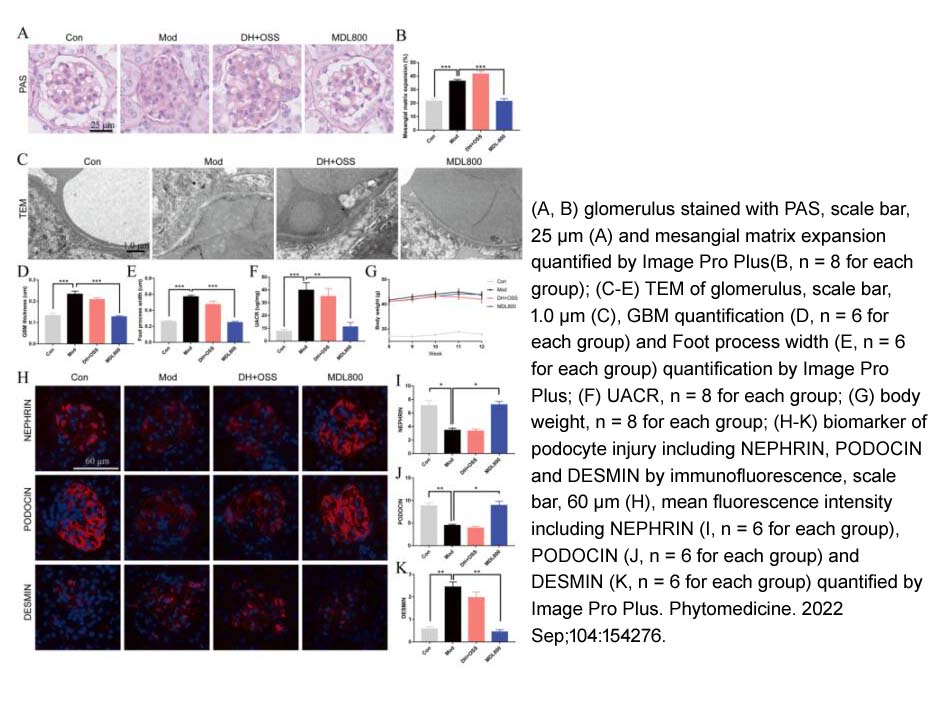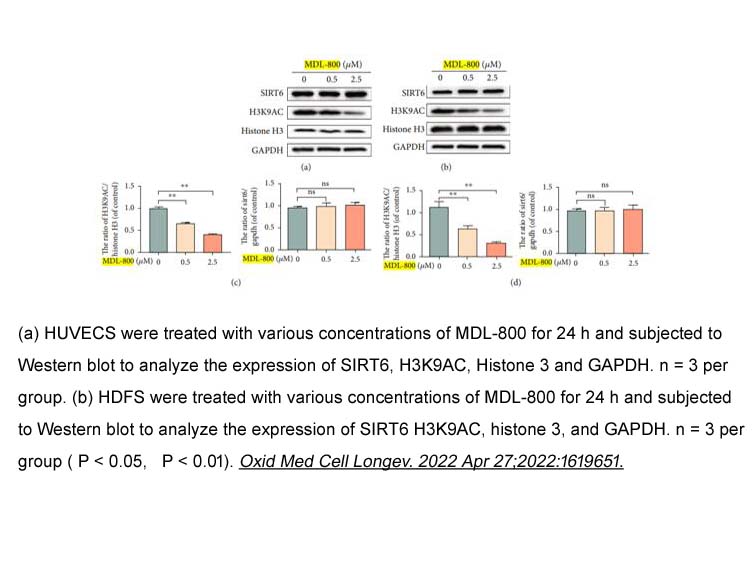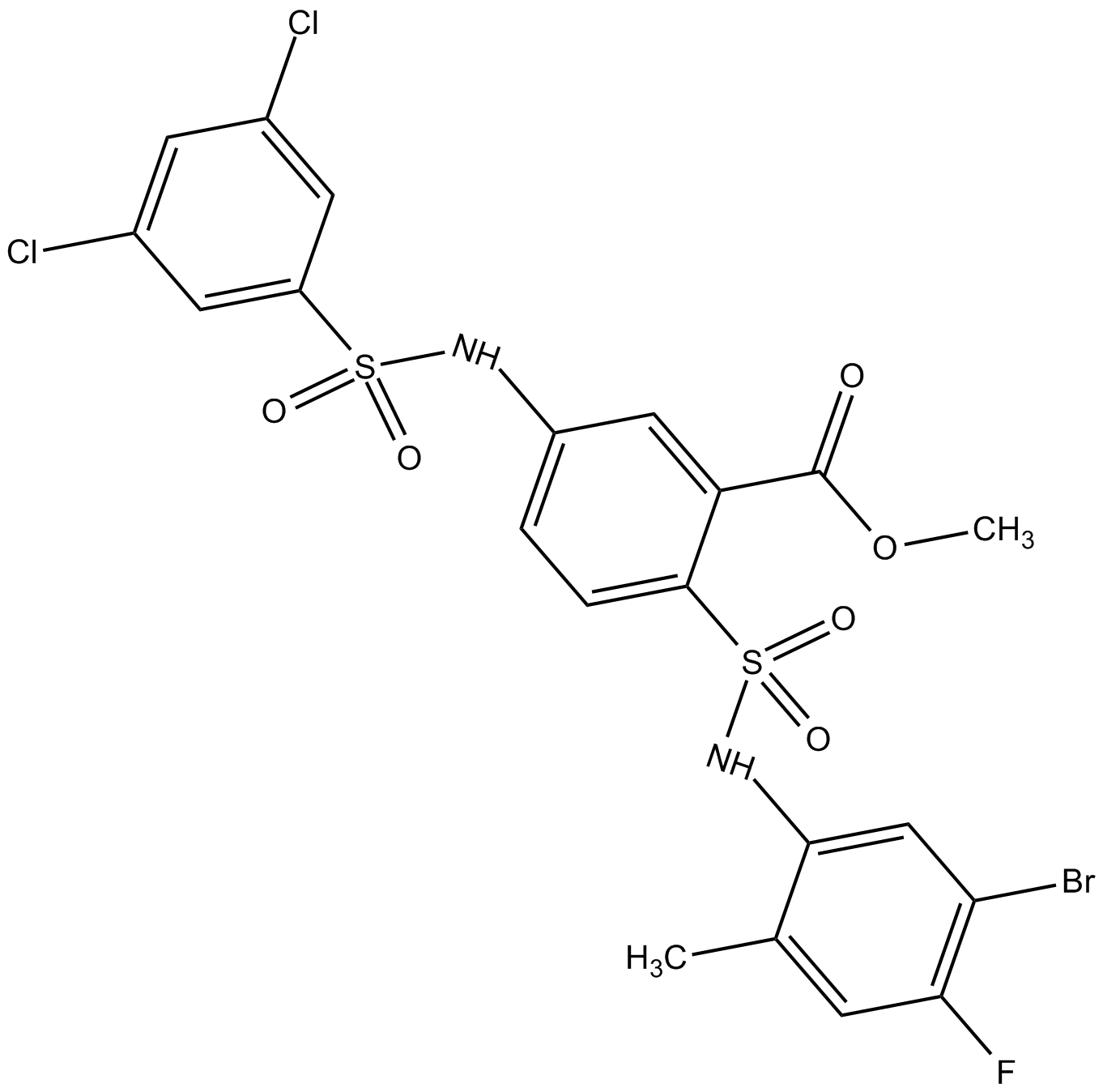MDL-800
MDL-800 is a selective allosteric activator of Sirtuin 6 (SIRT6) with EC50 value of 10.3 μM [1].
SIRT6, widely expressed in almost all mammalian organs, is involved in many biological processes, such as DNA repair, glucose/lipid metabolism, inflammation, aging and tumor suppression [2 - 4].
SIRT6 exhibits different selectivity among histone deacetylase (HDAC) members. When tested with 18 diverse HDAC members, MDL-800 potently activated SIRT6 by increasing SIRT6 deacetylation activity at the concentration of ~10 μM, without showing any activities toward SIRT1, SIRT3, SIRT4 and HDAC1-11 at concentrations up to 50 μM or 100 μM. In human hepatocellular carcinoma (HCC) cells including Bel7405, PLC/PRF/5 and Bel7402 cells, MDL-800 inhibited cell proliferation of with IC50 values of 23.3 μM, 18.6 μM and 24.0 μM, respectively [1].
In mouse model with Bel7405 xenograft, intraperitoneal injection of MDL-800 at doses of 50 mg/kg, 100 mg/kg and 150 mg/kg for 2 weeks suppressed the growth of Bel7405 xenografts. MDL-800 decreased tumor weight and size in a dose-dependent manner [1].
References:
[1]. Huang Z, Zhao J, Deng W, et al. Identification of a cellularly active SIRT6 allosteric activator. Nature Chemical Biology, 2018, 14(12): 1118-1126.
[2]. Kugel S, Mostoslavsky R. Chromatin and beyond: the multitasking roles for SIRT6. Trends in Biochemical Sciences, 2014, 39(2): 72-81.
[3]. Tasselli L, Zheng W, Chua, K F. SIRT6: novel mechanisms and links to aging and disease. Trends in Endocrinology & Metabolism, 2017, 28(3): 168-185.
[4]. Van Meter M, Gorbunova V, Seluanov A. SIRT6: a promising target for cancer prevention and therapy. Advances in Experimental Medicine and Biology, 2014, 818: 181-196.
- 1. Zhi Wang, Qiao Wu, et al. "Diosgenin protects against podocyte injury in early phase of diabetic nephropathy through regulating SIRT6." Phytomedicine. 2022 Sep;104:154276. PMID: 35728388
- 2. Xiaoqi Jiang, Zhe Yao, et al. "MDL-800, the SIRT6 Activator, Suppresses Inflammation via the NF-κB Pathway and Promotes Angiogenesis to Accelerate Cutaneous Wound Healing in Mice." Oxid Med Cell Longev. 2022 Apr 27;2022:1619651. PMID: 35528512
| Storage | Store at -20°C |
| M.Wt | 626.30 |
| Cas No. | 2275619-53-7 |
| Formula | C21H16BrCl2FN2O6S2 |
| Solubility | insoluble in H2O; ≥52.8 mg/mL in DMSO; ≥8.03 mg/mL in EtOH with ultrasonic |
| Chemical Name | methyl 2-(N-(5-bromo-4-fluoro-2-methylphenyl)sulfamoyl)-5-(3,5-dichlorophenylsulfonamido)benzoate |
| SDF | Download SDF |
| Canonical SMILES | ClC1=CC(S(NC2=CC=C(S(=O)(NC3=CC(Br)=C(F)C=C3C)=O)C(C(OC)=O)=C2)(=O)=O)=CC(Cl)=C1 |
| Shipping Condition | Small Molecules with Blue Ice, Modified Nucleotides with Dry Ice. |
| General tips | We do not recommend long-term storage for the solution, please use it up soon. |
Quality Control & MSDS
- View current batch:
Chemical structure

Related Biological Data

Related Biological Data









